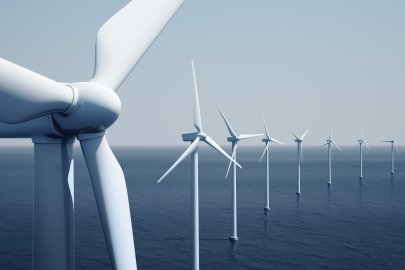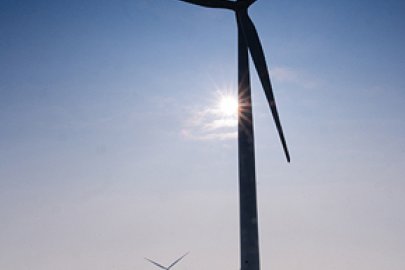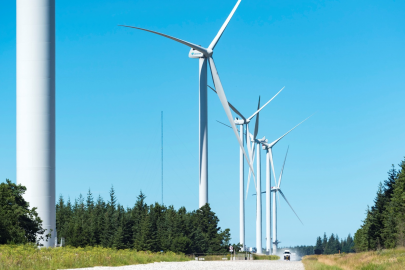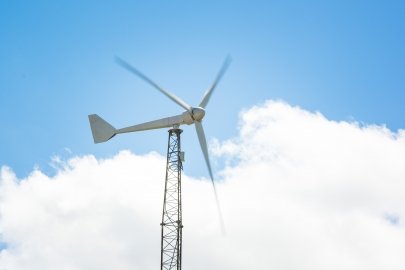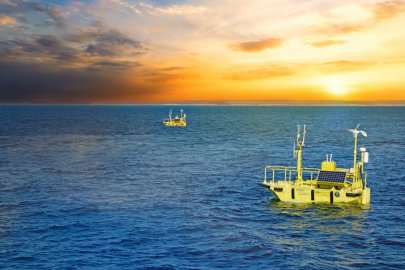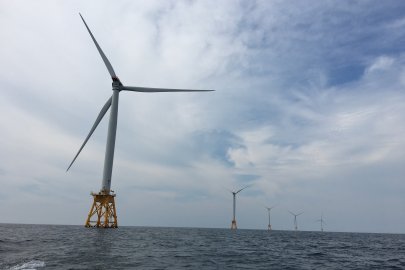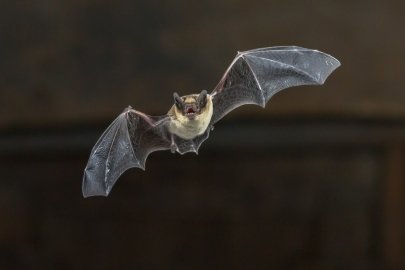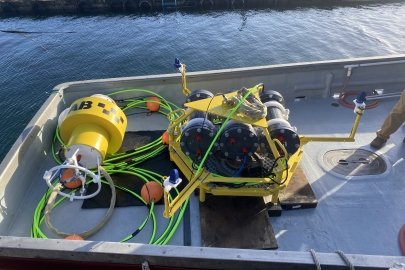Innovative technology mitigates the negative impacts of offshore wind energy development on this endangered species.
Wind Energy Technologies Office
June 2, 2021Innovative technology mitigates negative impacts of offshore wind energy development on this endangered species
With only about 300 individuals remaining, North Atlantic right whales are classified as Critically Endangered by the International Union for Conservation of Nature. These animals spend much of their lives along the Eastern Seaboard of the United States and Canada, where they share their migration corridor with areas targeted for offshore wind energy development.
“To protect this species, it will be critical to mitigate any negative impacts of offshore wind development, particularly those caused by pile driving during the construction of offshore wind power plants,” said Jason Wood, managing director for SMRU Consulting North America, which specializes in marine mammal research.
With funding from WETO and the State of Maryland’s Department of Natural Resources, SMRU Consulting is developing a real-time acoustic monitoring platform called the Coastal Acoustic Buoy for Offshore Wind (CABOW).
Comprising one or more CABOW units (pictured) and a central base station, the CABOW system is designed to accurately detect right whale calls while providing users with information about where the animals might be.
“Each relatively small CABOW unit is designed to be deployed for weeks at a time from any work boat equipped with a winch,” Wood said. “This makes the technology an easy-to-use and cost-effective mitigation strategy for offshore wind developers.”
The CABOW units comprise an anchor platform connected via a data cable to a surface buoy that relays information to a centralized processor in real or nearly real time. The data cable was designed to lessen whale entanglement risks. The anchor platform supports three underwater microphones, battery storage, and onboard signal and data processors. Positioning the microphones on the seabed minimizes surface noise and increases the ability to detect right whale calls. The buoy also supports a range of different communication devices, such as radios and cellular modems. The base station uses open-source software for processing, further reducing operational costs.
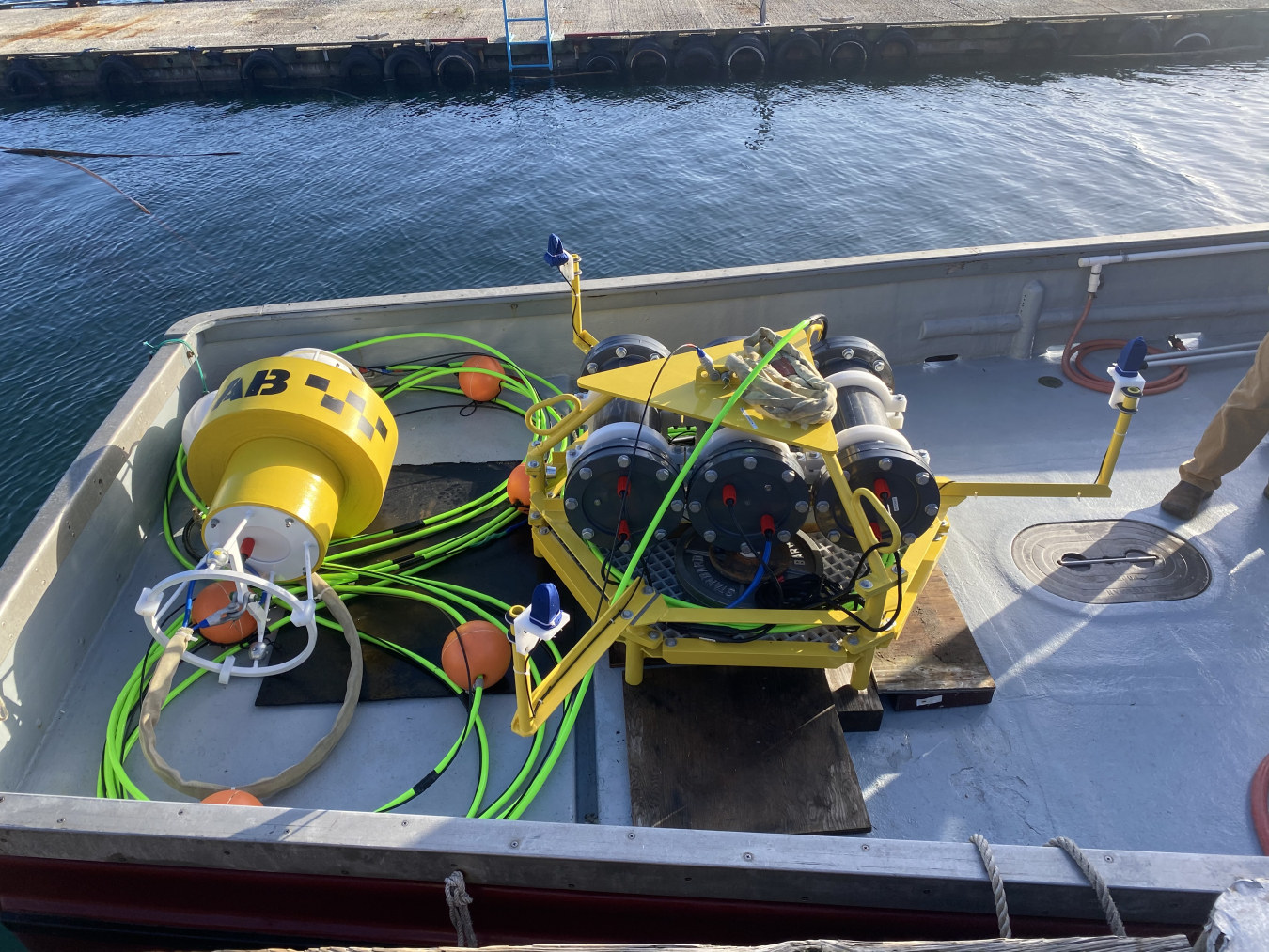
Prototype Coastal Acoustic Buoy for Offshore Wind unit ready to be deployed for field testing. On the left is the surface buoy with a data cable that relays information from the lander (on the right), which features three underwater microphones, battery storage, and onboard signal and data processers. Photo from SMRU Consulting
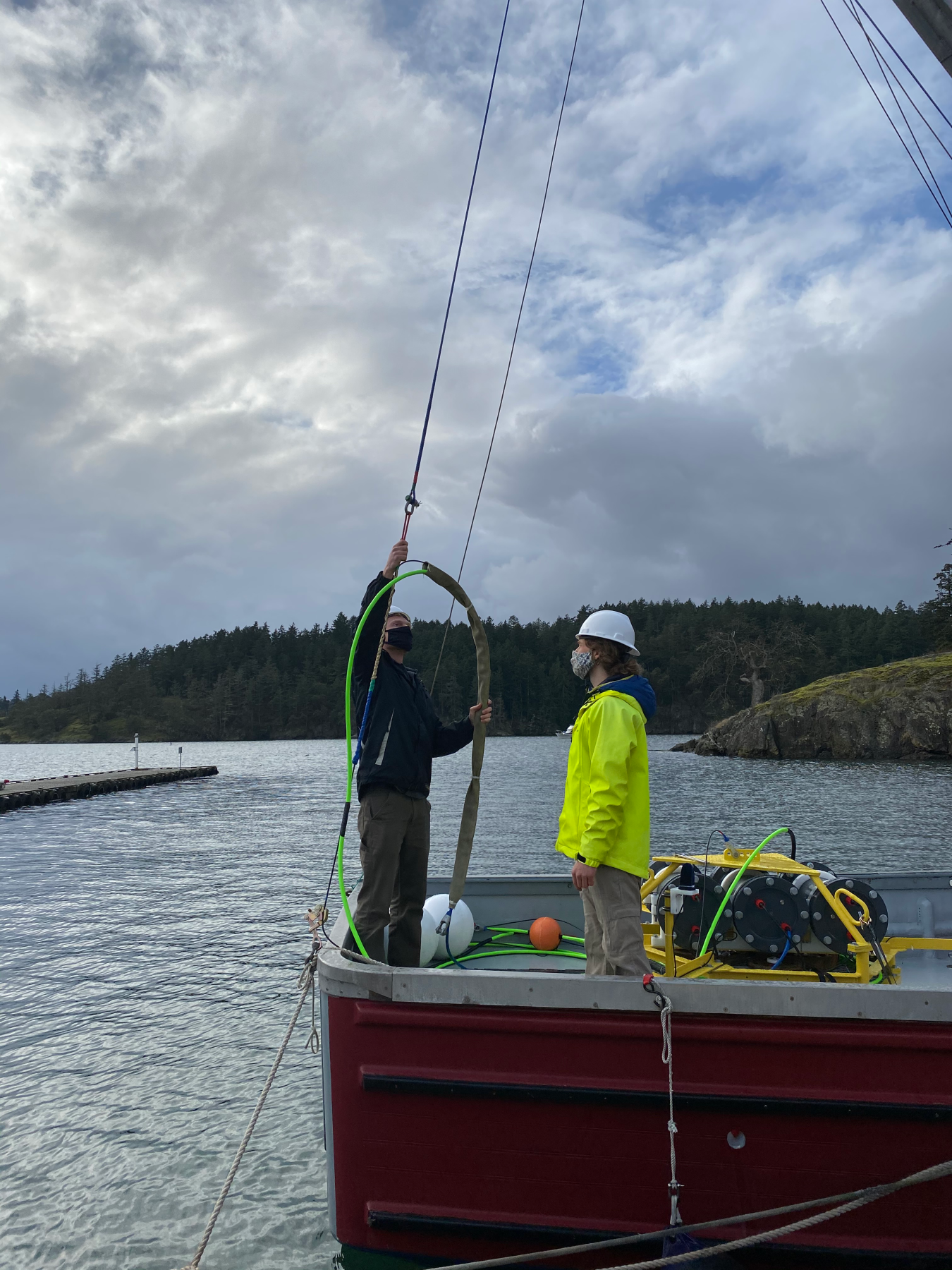
SMRU Consulting staff prepare the CABOW unit for deployment. This real-time acoustic monitoring platform can be used by offshore wind energy developers to minimize construction impacts on North Atlantic right whales. Photo from SMRU Consulting
Several CABOW units can be deployed around an active construction site to provide complete coverage of the right whale mitigation zone. If a whale enters this zone, pile-driving activity will be stopped or minimized because the noise can damage the whale’s hearing or harm the animal.
“When a CABOW unit makes a detection, it sends an alert to a central base station that can be located more than 10 kilometers away on shore,” said Wood. “Base-station staff then calculate bearings to each detection, and a state-of-the-art neural network classifier helps isolate North Atlantic right whale calls from background noise and minimize false positives.”
Protected-species observers, who are part of the environmental monitoring team hired by developers, conduct visual observations and check the CABOW whale detections. This combination of observers and CABOW units provides cost-effective and reliable data on the presence and movement of right whales around offshore construction areas.
“Our approach maximizes conservation outcomes while limiting costly shutdowns for offshore wind industry partners,” Wood said.
SMRU Consulting is currently in field trials with three prototype CABOW units to demonstrate the system’s ability to detect North Atlantic right whale calls, estimate the direction from the CABOW unit to the calling whale, securely transmit data more than 10 kilometers, and successfully apply artificial intelligence to minimize false alarms. Ongoing testing will enable SMRU Consulting to fully characterize the detection range and direction, and to finalize the first version of the CABOW system.
SMRU’s goal is to provide a cost-effective mitigation system that can be used by offshore wind energy developers to minimize potential construction impacts on North Atlantic right whales.
Subscribe to learn more about WETO R&D projects, news, accomplishments, and recent publications.
Subscribe to the WETO e-newsletter to stay informed on the latest wind energy news, events, publications, and updates.


